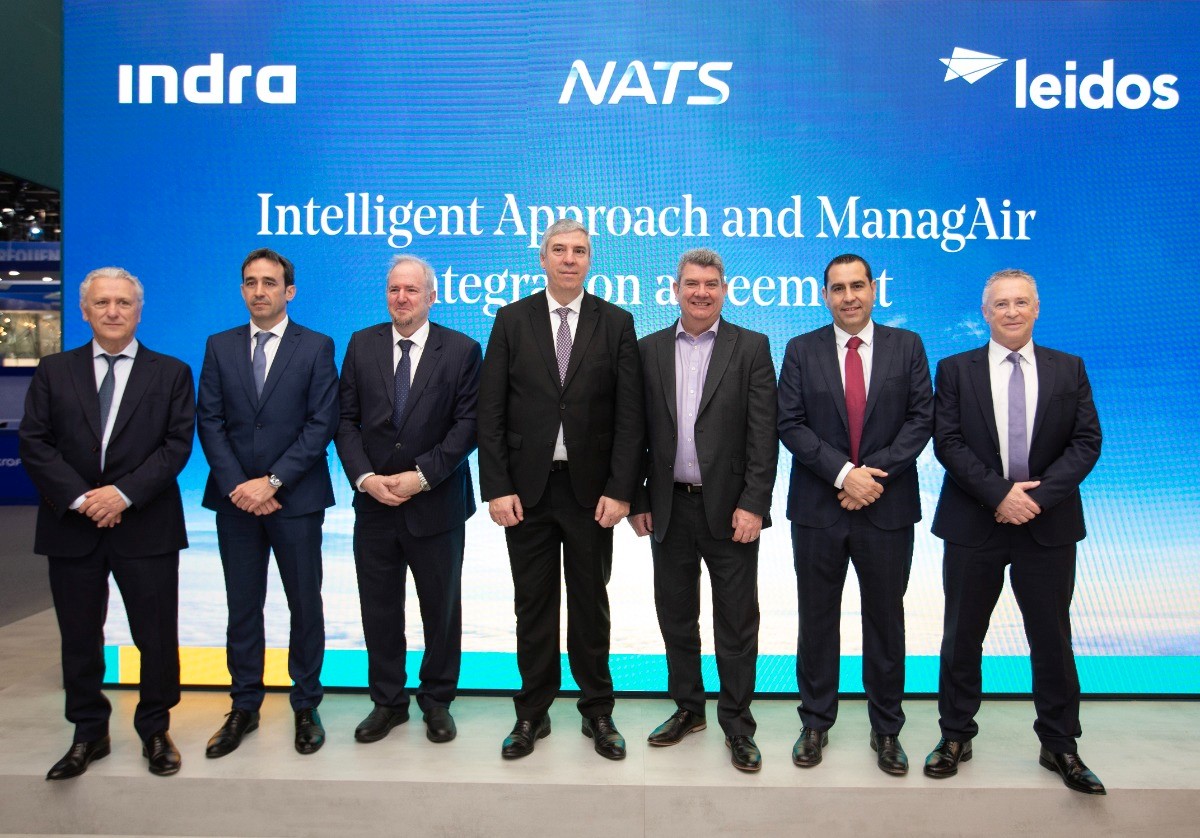Indra and Oro Navigacija move forward in the implementation of the European Digital Sky in Lithuania

Indra, a leading global technology and consulting company, and Oro Navigacija, in tight cooperation as iTEC partners, have made Lithuania one of the first countries in the world with the capability to manage air operations with great precision and calculate the arrival time of each aircraft with great accuracy. This is a step forward in fulfilling the EU's goal of building a more efficient digital sky, which will enable cleaner flights and further enhance safety.
Indra and Oro Navigacija have deployed the iTEC air traffic management system at the Vilnius en-route control center, integrating it with the lower and Vilnius tower airspace for a seamless air traffic management.
Oro Navigacija enters the group of countries with the capability to manage the upper and lower airspace with next-generation technology. Thus being able to calculate in advance the position of each aircraft throughout its entire route and flight phases and anticipate conflicts to prevent delays.
This technological achievement will enable cross-border free routing operations in the country in coordination with neighboring countries, currently in development process. Airlines will be able to select the most convenient route to reduce costs, emissions and improve travelers’ experience.
The iTEC system will facilitate the exchange of data with other countries’ air traffic control centers in a fully automated manner. It will also allow a flexible configuration of the airspace to adapt to changes in demand.
The newly introduced iTEC next-generation system is composed of three independent, yet functionally correlated platforms: air traffic control system, air traffic control simulator and air traffic control testing platform with contingency air traffic management system capabilities. The integrity of these platforms allows to ensure high level competencies of the air traffic controllers and engineering personnel as well as safety of the flights quality and continuity of the provided air traffic services.
iTEC is the air traffic management solution of the same-named alliance of seven air navigation service providers in Europe. German DFS and UK’s NATS are currently operating with it. ENAIRE (Spain), PANSA (Poland), LVNL (the Netherlands) and AVINOR (Norway) are well on the way to completing its deployment.
With 4D trajectory calculations, iTEC features the most advanced automation technologies. In the coming years, it will enable the incorporation of cloud and virtualization technologies that will revolutionize air traffic control.
Saulius Batavičius, Oro Navigacija's Chief Executive Officer: "We are very proud of the successful update of air traffic control systems, which constitute an inseparable part of technological partnership project iTEC. The newly installed iTEC system enables to ensure excellent competences of the air traffic controllers and engineering personnel as well as high quality of the air traffic control and other provided services".
José Luis González, Director of Indra, stated that "we are happy to have commissioned this new system that will improve air traffic management in Lithuania and Europe. This achievement will further strengthen our excellent partnership with Oro Navigacija. It will allow it to take a central role in the implementation of the next phases of the Single European Sky, in collaboration with other iTEC partners and Indra".
First class tower control
After successful launch of the iTEC system in the area control center, Indra’s i InNOVA system was put in operations at Vilnius Aerodrome Control Centre. InNOVA is an automated air traffic control system, receiving and processing data from the radars located in Vilnius, Kaunas and Palanga, special sensors located at Vilnius Aerodrome as well as from ground surveillance radar, recording movement and obstacles.
Both solutions are positively evaluated by Oro Navigacija’s ATCOs, after several months of its practical use. One of its main benefits is the advanced calculation methods it provides. Previously, air traffic controllers calculated the possible forthcoming aircraft conflicts based on various methods: by measuring the distance, calculating the speed and time, envisaging the speed of take-off and landing. Using the new system, calculations are executed automatically, thus, creating conditions for air traffic controllers to have more time to make a decision in possible conflict situation.
Another important benefit of the new ATC system is that now it enabled Controller-Pilot Data links (CPDLS) services and new modes of communication among ATCOs and pilots.
With InNova, Vilnius Aerodrome Center ATCOs are enabled to see what is happening on the platform, on the runway or on taxiway on the same screen. Such accurate visibility is a very significant advantage under poor visibility conditions and at night time, when the usual visibility through the window is impeded. Additionally, the system provide important support through the automatic safety functions, which enable the air traffic controllers to receive alerts, in case a certain obstacle occurs on the runway.
“In case a situation occurs when an air traffic controller forgets that somebody has entered the runway territory or such an entry is performed without the permission of the air traffic controller, while an aircraft is preparing for landing or take-off at the same time, a signal of system would be activated immediately and the air traffic controller would be able to undertake the necessary actions right away: to eliminate the obstacle or to divert the aircraft for repeated approach for landing”, such benefits of the new system were shared by air traffic controller Tomas Pagirys.


.png)



.jpg)


Comments
There are no comments yet for this item
Join the discussion